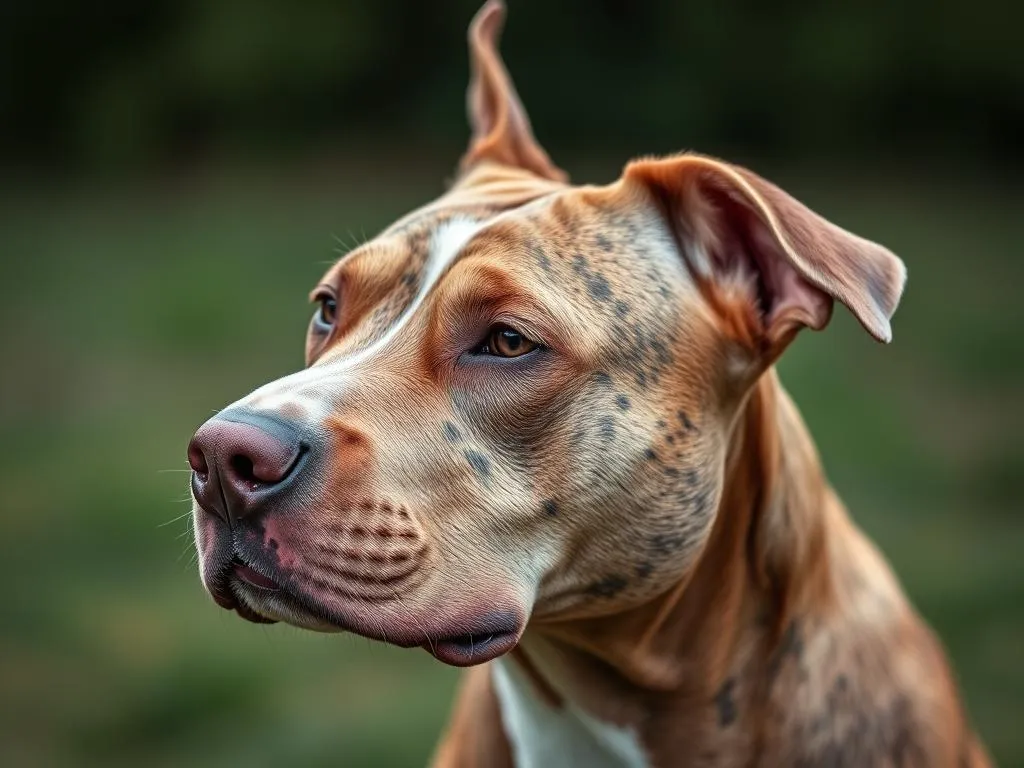
Introduction
Dog breeds play a significant role in pet ownership, influencing everything from temperament and behavior to physical characteristics and care needs. Among these breeds, the Pitbull stands out for its loyalty, intelligence, and strength. However, one topic that often arises in discussions about this breed is pitbull ear cropping. This practice involves surgically altering the shape of a dog’s ears, typically to achieve a specific aesthetic. Understanding the implications of ear cropping for Pitbulls—including the reasons behind it, the procedure itself, and the associated ethical considerations—is essential for responsible pet ownership.
Understanding Dog Breeds
The Importance of Breeds
Dog breeds are defined as distinct groups of dogs that have been selectively bred over generations to possess specific traits. These traits can include physical appearance, temperament, and behavior. The breed of a dog can significantly influence how it interacts with its environment and its owners, making it crucial for potential pet owners to understand the characteristics of various breeds.
Overview of Popular Dog Breeds
Popular dog breeds encompass a wide variety, including Labradors, German Shepherds, Golden Retrievers, and, of course, Pitbulls. Each breed has its unique set of traits. For instance, while Labradors are known for their friendly disposition and eagerness to please, Pitbulls are often recognized for their strength and loyalty. Understanding these traits can guide potential owners in selecting a breed that fits their lifestyle.
The Pitbull Breed
History and Origins
The Pitbull breed has a complex history that dates back to the early 19th century in the United Kingdom. Originally bred for bull-baiting, these dogs were also used as farm dogs and companions. Their versatility and strength made them valuable working dogs. Over time, the breed evolved, and although they were initially bred for specific functions, today, they are known more for their companionship than their working abilities.
Physical Characteristics
Pitbulls are medium-sized dogs known for their muscular build and strong jaws. They typically weigh between 30 to 85 pounds, depending on the specific type (such as American Pit Bull Terrier or American Staffordshire Terrier). Their coat is short and can come in various colors and patterns. Distinctive features include a broad head, well-defined muscles, and a strong, agile body, making them one of the most recognizable breeds.
Temperament and Behavior
Known for their loyalty and intelligence, Pitbulls can be great family pets. However, they require proper socialization and training from an early age. They are often eager to please their owners, which can make them relatively easy to train. Despite their sometimes intimidating appearance, with proper care and training, Pitbulls can be affectionate, loving companions.
Ear Cropping: An Overview
What is Ear Cropping?
Ear cropping is a surgical procedure that involves removing a portion of a dog’s ear. This practice is often performed on breeds like Pitbulls to achieve a specific appearance. Historically, ear cropping was thought to prevent ear infections and improve hearing; however, most of these claims lack scientific backing. Today, the primary reason for ear cropping is aesthetic, aligning with certain breed standards and cultural perceptions.
Legal and Ethical Considerations
The legality of ear cropping varies significantly across different regions. In some countries, it is banned altogether due to animal welfare concerns, while in others, it remains a common practice. The ethical debates surrounding pitbull ear cropping often center on animal rights, with many advocates arguing that the procedure is unnecessary and causes undue suffering to the dog. Understanding these legal and ethical implications is crucial for responsible dog ownership.
The Process of Ear Cropping for Pitbulls
Reasons for Ear Cropping
Owners may choose to crop their Pitbull’s ears for various reasons, ranging from aesthetics to cultural influences. While some believe that cropped ears give a dog a more “intimidating” appearance, others may follow breed standards set by kennel clubs. It’s essential to consider these motivations critically, as they may not always align with the best interests of the dog.
The Procedure
Ear cropping is a surgical procedure that typically involves the following steps:
- Pre-surgical Consultation: A veterinarian will assess the dog’s health and discuss the procedure’s risks and benefits with the owner.
- Anesthesia: The dog is placed under general anesthesia to ensure it is unconscious and pain-free during the surgery.
- Surgical Removal: A portion of the ear is carefully removed, and the remaining tissue is stitched.
- Aftercare: Post-surgery, the dog may require pain relief and must be monitored for signs of infection. The ears will need regular cleaning and maintenance to promote healing.
Recovery can take several weeks, during which the dog should be kept calm and restricted from vigorous activities.
Pros and Cons of Ear Cropping
Benefits of Ear Cropping
Proponents of pitbull ear cropping argue that the procedure can enhance the dog’s appearance according to breed standards. Some owners also believe that cropped ears may prevent ear infections, although this claim is widely debated among veterinarians. Additionally, some owners report that their dogs seem to have better communication and expression with cropped ears.
Risks and Downsides
However, the practice is not without its drawbacks. The health risks associated with ear cropping include:
- Infection: As with any surgical procedure, there is a risk of infection.
- Pain and Discomfort: The surgery can cause significant pain and discomfort for the dog.
- Behavioral Impact: Some studies suggest that dogs with cropped ears may exhibit increased aggression due to pain or discomfort.
Furthermore, many veterinarians advocate for the beauty of natural ear shapes, emphasizing that a dog’s worth should not be judged by its appearance.
Alternatives to Ear Cropping
Natural Ear Shapes
Pitbulls naturally have floppy ears that add to their charm and character. The beauty of a dog’s unaltered ears should not be overlooked. Many owners find that their dogs’ natural features contribute to their unique personality and appeal.
Other Cosmetic Procedures
As the veterinary field evolves, the trend toward non-invasive cosmetic procedures is gaining traction. Alternatives to ear cropping include ear taping, which can help achieve a similar aesthetic without surgical intervention. Owners interested in cosmetic modifications should research these options and consult with veterinarians who prioritize the dog’s well-being.
Responsible Ownership and Care
Importance of Education
Education is paramount for anyone considering adding a Pitbull to their family. Understanding the breed’s characteristics, care requirements, and the implications of practices like ear cropping is essential. Numerous resources, including books, articles, and online forums, can provide valuable information for prospective owners.
Advocacy for Pitbulls
Breed-specific legislation (BSL) often targets Pitbulls, which can lead to restrictions or bans in certain areas. Advocacy groups work tirelessly to promote responsible ownership and combat misconceptions about the breed. Supporting these organizations can help ensure that Pitbulls receive the love and care they deserve while promoting responsible pet ownership.
Conclusion
In summary, understanding the complexities surrounding pitbull ear cropping is essential for responsible pet ownership. From the history and characteristics of the breed to the ethical considerations of cosmetic procedures, informed decisions can lead to healthier and happier lives for our canine companions. Emphasizing education, advocacy, and ethical treatment will help foster a more positive environment for Pitbulls and their owners.
As you consider adding a Pitbull to your family or contemplating ear cropping, remember that these decisions should always prioritize the well-being of the dog. Embracing their natural beauty and unique characteristics is a rewarding path for both the owner and the pet.









